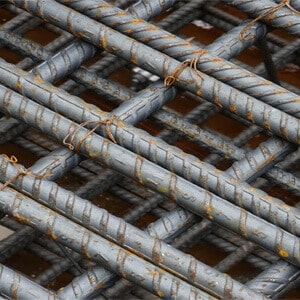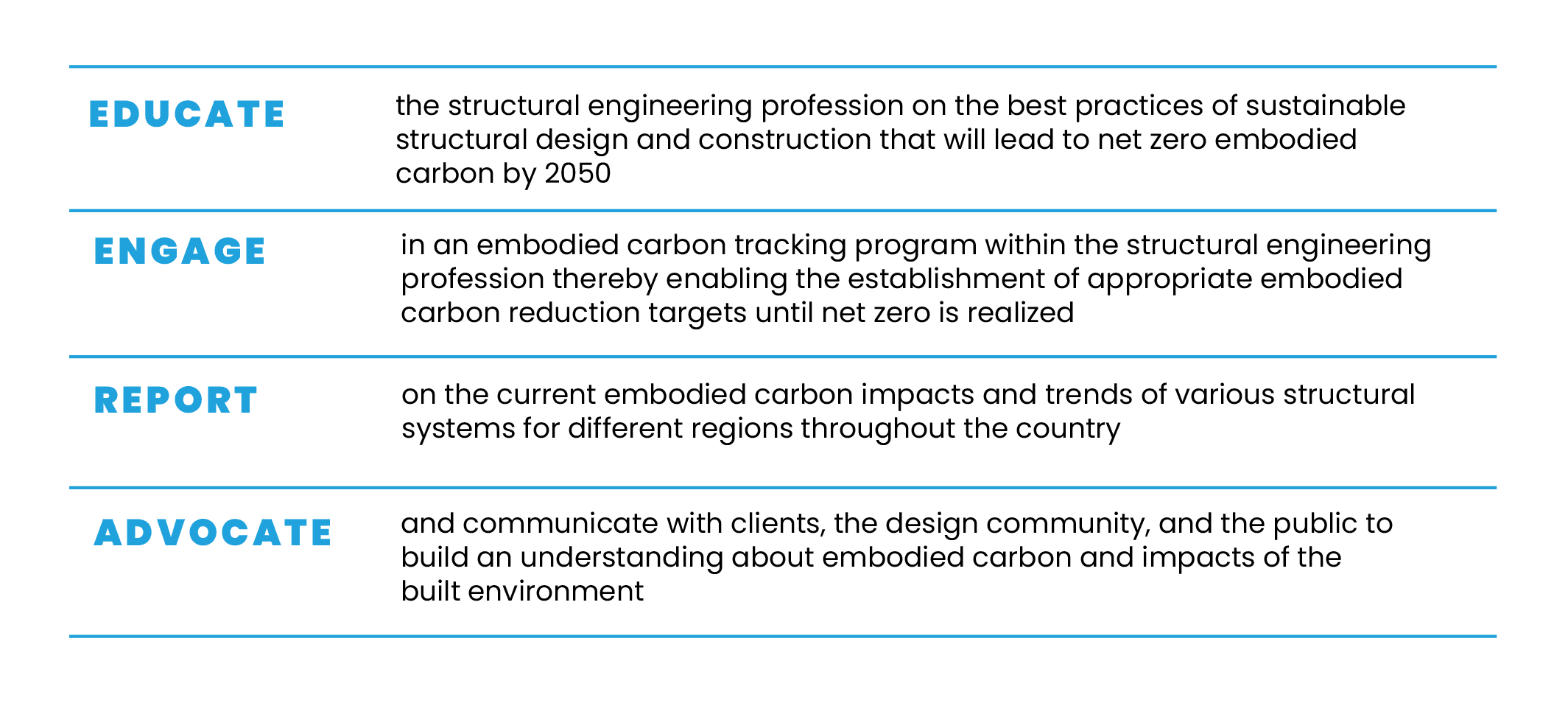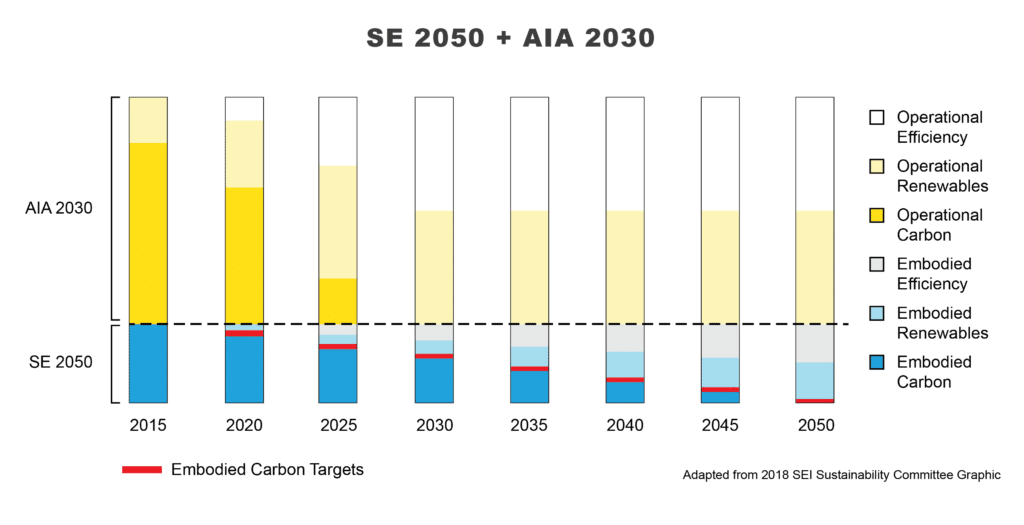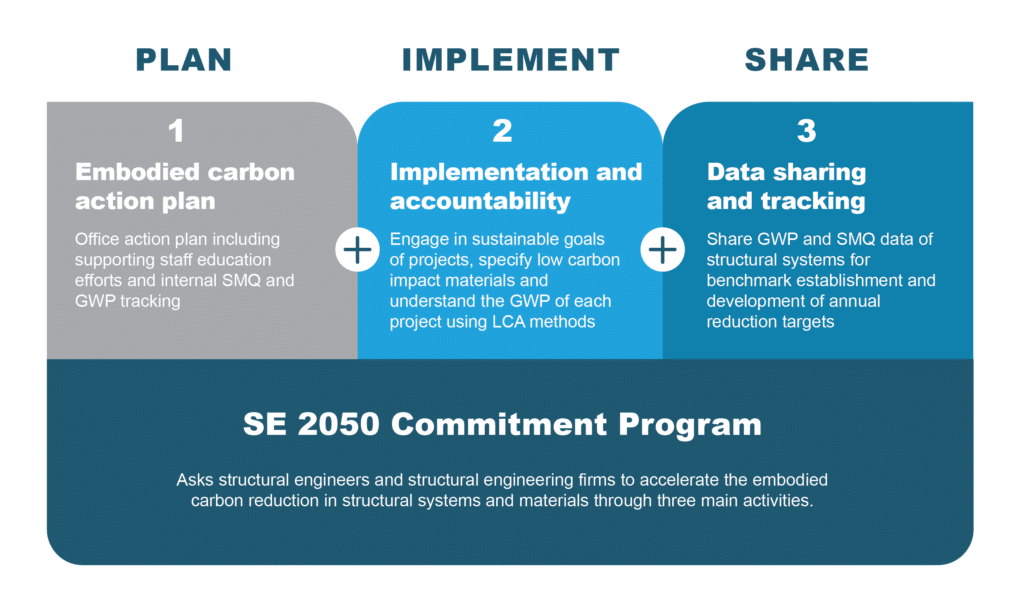SE 2050 stands for the Structural Engineers 2050 Commitment Program that is in response to the SE 2050 Challenge issued in 2019 by the Carbon Leadership Forum (CLF). The SE 2050 Commitment Program was developed by the Sustainability Committee of the Structural Engineering Institute (SEI) of the American Society of Civil Engineers (ASCE). This site is dedicated to the SE 2050 Commitment Program or SE 2050 for short. This comprehensive program has been designed to ensure substantive embodied carbon reductions in the design and construction of structural systems by the collective structural engineering profession.
The SE 2050 Commitment Program was developed in response to the SE 2050 Challenge, which states:
All structural engineers shall understand, reduce and ultimately eliminate embodied carbon in their projects by 2050.
In December 2019 the SEI Board of Governors endorsed the vision of the SE 2050 Challenge by stating:
We, the Structural Engineering Institute (SEI) of the American Society of Civil Engineers (ASCE), support the vision and ambition of the SE 2050 Challenge. We, as a leading structural engineering organization in the United States, recognize the need for coordinated action across our profession to achieve the globally stated goal of net zero carbon by 2050.
The goal of the Program is to provide an accessible sustainability program, for individual structural engineers and structural engineering firms, with an accountable commitment strategy of active engagement on projects and sharing of information all in the name of achieving zero net carbon structures by 2050. The basic aims of the Program are to:
Through this process we will be able to track the embodied carbon impacts of our structural systems, assess the trends for various systems and then establish achievable reduction targets over time. This concept is modeled after the Architecture 2030 reduction targets for operational energy; SE 2050 will run parallel with this for structural embodied carbon. See figure.
Within the Program are three strategic areas of focus: Plan, Implement, and Share summarized below:
Plan: Individuals and firms commit to establishing an Embodied Carbon Action Plan (ECAP) and providing staff with education in the field of embodied carbon including life cycle assessment (LCA).
Implement: Engage in sustainable goals of projects, pursue low carbon design, specify low carbon impact materials, and assess and understand the embodied carbon impact of projects using LCA methods.
Share: Share embodied carbon data of your structural systems to a central database for understanding national trends and developing appropriate reduction targets.
It’s well documented that we must be a carbon neutral society by 2050 if we are to avoid irreversible detrimental impacts to our environment.
Net zero means to SE 2050 that the total impact of all components of the structural system net to a zero embodied carbon impact when considering all stages of a building’s life-cycle. Our vision is net-zero embodied carbon structural systems by 2050.
Reaching net zero requires collective industry action from all stakeholders, including structural engineers. SE 2050 is one of several initiatives to spur action and encourage cross-sector collaboration and alignment to promote further consistency, standardization, and collective impact toward successfully decarbonizing the building sector. As structural engineers, we are responsible for educating our industry on opportunities for embodied carbon reductions, encouraging optimized, low-carbon building designs, and demanding the availability of production and documentation of lower-impact materials. After all, any changes to the structure as it relates to embodied carbon must be approved by the Structural Engineer of Record.
See the white paper Achieving Net Zero Embodied Carbon in Structural Materials by 2050 for more information.
Please follow this link to view our 2024 Annual Report.
This paper from the 2022 SEAOC conference provides a good overview of the program.





